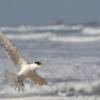-
Posts
9,441 -
Joined
-
Last visited
Content Type
Profiles
Forums
Gallery
Events
Everything posted by Jim Lad
-
A interesting problem in model construction. John
- 422 replies
-
- minesweeper
- Cape
-
(and 1 more)
Tagged with:
-
Looks just like the banks of some rivers I know, Greg (minus the radioactive warning signs on the drums)! John
-
The engine looks great. Keith. No idea how big your 'penny' is, but I'm guessing not very big? John
- 732 replies
-
- Lula
- sternwheeler
-
(and 1 more)
Tagged with:
-
Hello 'Swimmer' and a warm welcome to the forum from 'Down Under'. John
-
Just catching up on your fascinating rebuild, Ian. Great work! John
- 235 replies
-
This log has lain dormant for some considerable time, so I thought I'd better tell people what's happening. The poor old 'Meteor' hasn't been forgotten or abandoned but sits patiently on my desk at home while all my efforts are directed to trying to get the 'Duchess' completed. Progress will resume once the 'Duchess' has been handed over to the museum staff. John
-
Greg, I've been silently admiring your work for some time and thought I should apologise for not posting to comment on your beautiful models. I'll try and do better in future. John
-
Looks good, Phil. Now you need to tackle to bilge keels! John
- 422 replies
-
- minesweeper
- Cape
-
(and 1 more)
Tagged with:
-
Hello Mike, and a warm welcome to the forum from 'Down Under'. John
-
Hello Lars, and a warm welcome to the forum from 'Down Under'. John
-
Things have been moving ahead a little faster than I expected as most of the corrections on deck have now been made, so I've been able to concentrate more on the standing rigging. I'm now back to the main mast and currently working on the royal rigging, so almost finished there. You can also see additional coils hanging over the side indicating that the lower halliard fittings are in and ready for the yards. The fore spreaders are also now fitted. I always fit the spreaders after the rigging is done, as the very slightest alteration in angle of any of the upper backstays throws the spreader alignment off, so better to fit the spreader to the actual rigging than the other way around. You will also see a clothes peg hanging on the main topmast stay near the deck. This is as a result of a self-inflicted disaster when I tried to trim a loose end down near the foremast base and slipped, slicing neatly through one leg of the stay! 🥵🥵🥵 I think it will be OK but will see tomorrow when I try to complete the repair. John
About us
Modelshipworld - Advancing Ship Modeling through Research
SSL Secured
Your security is important for us so this Website is SSL-Secured
NRG Mailing Address
Nautical Research Guild
237 South Lincoln Street
Westmont IL, 60559-1917
Model Ship World ® and the MSW logo are Registered Trademarks, and belong to the Nautical Research Guild (United States Patent and Trademark Office: No. 6,929,264 & No. 6,929,274, registered Dec. 20, 2022)
Helpful Links
About the NRG
If you enjoy building ship models that are historically accurate as well as beautiful, then The Nautical Research Guild (NRG) is just right for you.
The Guild is a non-profit educational organization whose mission is to “Advance Ship Modeling Through Research”. We provide support to our members in their efforts to raise the quality of their model ships.
The Nautical Research Guild has published our world-renowned quarterly magazine, The Nautical Research Journal, since 1955. The pages of the Journal are full of articles by accomplished ship modelers who show you how they create those exquisite details on their models, and by maritime historians who show you the correct details to build. The Journal is available in both print and digital editions. Go to the NRG web site (www.thenrg.org) to download a complimentary digital copy of the Journal. The NRG also publishes plan sets, books and compilations of back issues of the Journal and the former Ships in Scale and Model Ship Builder magazines.






.thumb.jpg.f4b0790ad00c027ad52f9b545f63e42f.jpg)
.thumb.jpg.19b6de30b25fc6c9c1e4cd7d2ba761ef.jpg)
.thumb.jpg.317ce8eefa4a11c35184e55547af1335.jpg)
